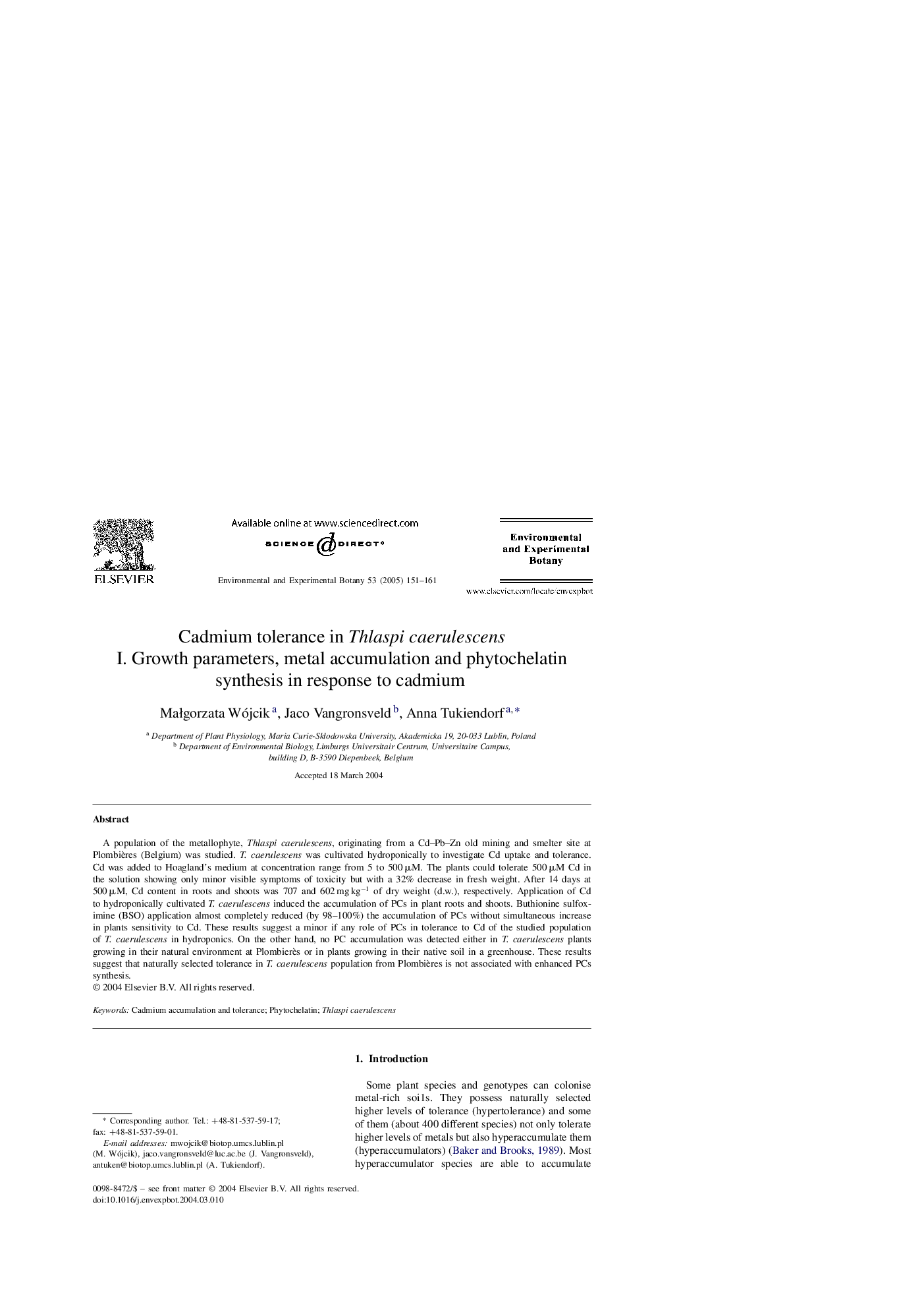| Article ID | Journal | Published Year | Pages | File Type |
|---|---|---|---|---|
| 9485645 | Environmental and Experimental Botany | 2005 | 11 Pages |
Abstract
A population of the metallophyte, Thlaspi caerulescens, originating from a Cd-Pb-Zn old mining and smelter site at Plombières (Belgium) was studied. T. caerulescens was cultivated hydroponically to investigate Cd uptake and tolerance. Cd was added to Hoagland's medium at concentration range from 5 to 500 μM. The plants could tolerate 500 μM Cd in the solution showing only minor visible symptoms of toxicity but with a 32% decrease in fresh weight. After 14 days at 500 μM, Cd content in roots and shoots was 707 and 602 mg kgâ1 of dry weight (d.w.), respectively. Application of Cd to hydroponically cultivated T. caerulescens induced the accumulation of PCs in plant roots and shoots. Buthionine sulfoximine (BSO) application almost completely reduced (by 98-100%) the accumulation of PCs without simultaneous increase in plants sensitivity to Cd. These results suggest a minor if any role of PCs in tolerance to Cd of the studied population of T. caerulescens in hydroponics. On the other hand, no PC accumulation was detected either in T. caerulescens plants growing in their natural environment at Plombierès or in plants growing in their native soil in a greenhouse. These results suggest that naturally selected tolerance in T. caerulescens population from Plombières is not associated with enhanced PCs synthesis.
Keywords
Related Topics
Life Sciences
Agricultural and Biological Sciences
Ecology, Evolution, Behavior and Systematics
Authors
MaÅgorzata Wójcik, Jaco Vangronsveld, Anna Tukiendorf,
